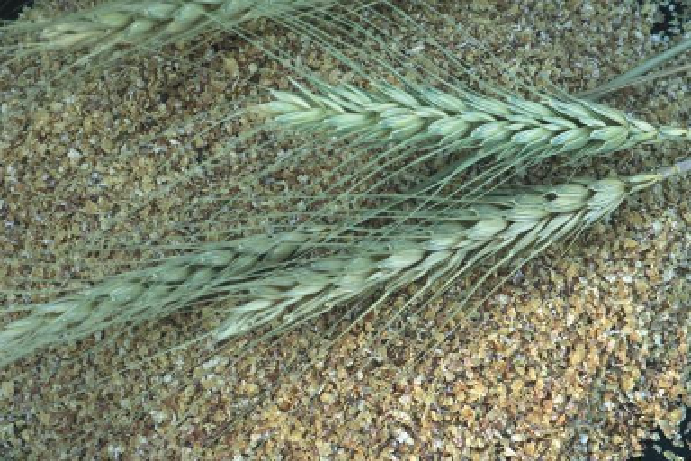Chemistry Reference
In-Depth Information
(c)
(b)
(a)
(d)
FIGURE 6.15
Examples of ancient grains. Above: (a)
Triticum boeoticum
, (b)
Triticu m
dicoccum
, (c)
Aegilops ovata
, and (d)
Hordeum spontaneum
. (Photograph courtesy of Steven
Foster.)
domesticated strains of wheat cannot survive in the wild. Some wild species of wheat
(the ancient grains; Figure 6.15) can be found growing in the Middle East. A com-
parison between wild species and their cultivated forms shows a reduction of about
5% of the total phenolic constituents in the latter species. Interestingly, in species of
wild wheat there are rare lignans, which act specifically as germination regulators
of the wheat seeds. Since these lignans are water-dissolving germination inhibitors
they may act as natural “rain gauges.” Thus, this aspect may have been especially
important for the germination of wheat and similar crops at the appropriate time
in those species inhabiting arid regions or deserts, an attribute developed during
the domestication of the wild species to the cultivated forms. These structures were
determined to be lignans of the type shown in Figure 6.16. Furthermore, in a single
oxidative
coupling reaction, when one molecule of cinnamoyl alcohol was added
to one molecule of the cinnamic acid, as expected three lignans were produced.
Compound 3 was identical to the naturally occurring germination inhibitor in the
wild wheat (Figure 6.16).


Search WWH ::

Custom Search